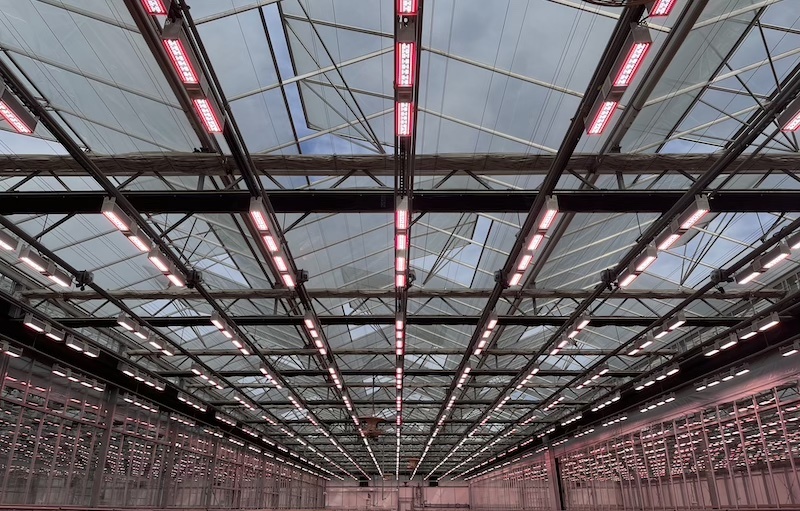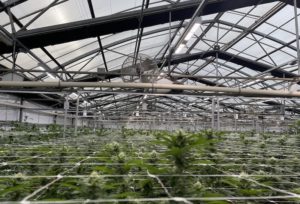
An Enlightened Look at Lighting Cannabis
The cannabis industry is ever-changing, ever-improving and continues to redefine the lighting requirements needed for successful cannabis production. One obvious improvement, which has been made industry-wide, has been the transition away from legacy technology such as HPS (high-pressure sodium) to LEDs (light-emitting diodes). This has been proven not only by the number of recent retrofits of existing cultivation facilities but also based on data from new build outs of both greenhouses and indoor facilities specifically for cannabis production.
Hemp research is now providing clarity on ideal commercial methods and materials needed for practical cannabis production in all markets: indoor, greenhouse and field production. This research is covering not just lighting but also pest and disease management, plant nutrition, tissue culture and breeding. The cannabis industry is now starting to resemble a maturing horticultural market that evolves based on proven horticultural practices and science instead of just hearsay.
The focus of current cannabis lighting research now spans all facets throughout cultivation production stages from mother stock production, propagation, the vegetative stage and flowering. There has been a recent focus on cannabis photoperiod requirements also as most cannabis genetics offered to the market are considered “short-day” genetics (requiring a short day preceded by a long day in order to maximize flower production/manipulate the reproductive stage).
Outside of the forward-looking research, where does the industry stand as of right now?
Cannabis cultivators are starting to properly understand how to measure lighting — artificial and ambient. They are doing this through understanding light intensity (μmol/m²/s) and light accumulation, DLI (daily light integral) measured in moles/day. With the ability to adequately measure light intensity and light accumulation during a single day/ photoperiod at their specific location or facility, cultivators are now focusing on light quality or spectra.
Cultivators, whether growing indoors, in greenhouses or outdoors, are now using similar tools to measure lighting. Many are using handheld quantum sensors to measure light intensity indoors, using their environmental controls systems, such as Priva, to measure DLI of ambient light levels in conjunction with their supplemental lighting in greenhouses, to field growers now having an appreciation of their crop’s flowering photoperiod requirements using local day length and light accumulation data provided specifically for their location/latitude.
No matter the cultivation system, the goal is still the same, yield/area/year. Yield can be defined broadly because some cultivators are focused on total biomass production being valued based on milligrams/acre/year with one seasonal crop cycle compared to some cultivators who have continuous production of dried flower (grams/ft²/cycle). But at the same time, don’t they go hand in hand? Let’s look at a few examples for each of these different cultivation segments.
Indoor production
One of the main advantages of complete indoor production is environmental control and consistency. Cultivators can manipulate all influencing factors on plant growth with precision, giving them the ability to have very predictable production. When determining what lighting solution would be best suited for a cultivator’s facility, the cultivator needs to determine what DLI they want to achieve during both the vegetative stage and flowering stage of production. Once the DLI is determined, the cultivator will know what their light intensity level at the canopy needs to be. Indoor cultivators are not able to utilize any ambient sunlight so all crop lighting requirements will be applied artificially. Because of this, the energy efficiency of their fixtures needs to be taken into consideration, and this is measured in μmols per joule.
Another consideration is the lighting’s impact on the indoor growing environment. Without proper consideration of the heat load generated from the sole-source lighting choice, it may negatively impact HVAC requirements. As we all know, energy and labor are our top costs during cannabis production. Choosing the right sole-source lighting solution is critical to keeping cost and carbon footprint low while still maintaining and pushing crop performance.
Lastly, the light spectra a grower chooses is very important indoors. The spectra you choose should not only be based on your crop’s growth and developmental needs and your energy goals, but also on employee work conditions. A cultivator’s lighting choice will influence employees’ ability to properly identify pests and diseases while also influencing predatory insects used for biocontrol.

Greenhouse production
A greenhouse enables a cultivator to take advantage of the ambient environment at their location while simultaneously having the ability to manipulate that same environment through environmental controls. As the cannabis market develops, more cultivators who are pushing the limits of at-scale production are doing so in greenhouses as the cost and environmental impact are much lower than indoor production per square foot. When determining lighting for a greenhouse, location is key. A cultivator has to fully understand the seasonal changes at their location regarding natural sunlight along with the glazing material covering the greenhouse, temperature, rain, day length, and anything else that could influence the environment inside the greenhouse. Cultivators should understand their natural day length (photoperiod) throughout the year while understanding the total light penetrating their greenhouse through their internally measured DLI. From here, cultivators would need to determine a minimum DLI they do not want to go under and work with their lighting vendor to determine the proper light intensity/supplemental lighting design to achieve the proper light accumulation, annually, at canopy level.
Outdoor production
Cultivation of cannabis outdoors is currently dominated by field hemp production. There are cultivators growing THC crops outdoors in certain states, but the area taken up with hemp far exceeds that of THC field crops. With this said, most hemp cultivators have one cycle per year. There may be a few farmers out there pushing the limits of this with auto-flower genetics or short-day crops in specific regions but for the most part, most cannabis production outdoors has one crop per year.
For this style of production, cultivators need to have a strong understanding of the photoperiodic response of the genetics they are growing, as this will determine their success from a crop scheduling perspective. They will need to know when to plant based on when day lengths are long enough to keep the plant vegetative in the spring but also soon enough so they can take advantage of the natural long days throughout the summer to build vegetative growth on the plant. They will then need to understand at what photoperiod their crop will initiate flowering and schedule their state testing based on this along with their harvest schedule.
There are some cultivators in more southern regions in the U.S. who are using spotlights or string lights outdoors to keep their crops vegetative. This works but is challenging at scale and is used when the day lengths are not long enough to bulk a crop adequately before flowering. Spring and fall frosts in parallel to a field cultivator’s day length need to be considered because in specific latitudes a cultivator may have a long enough day to plant but could risk their whole crop dying from a late spring frost even though they did their due diligence at planting as soon as possible without premature flower.
Keep in mind that in all three of these production systems, light is tied to all other influencing factors to plant growth. As a simple example, if you were to push high light levels indoors or in a greenhouse, if you don’t have the proper CO₂ levels nor VPD (vapor pressure deficit) control, or nutrition regime/ delivery — the lighting can only do so much for you.








